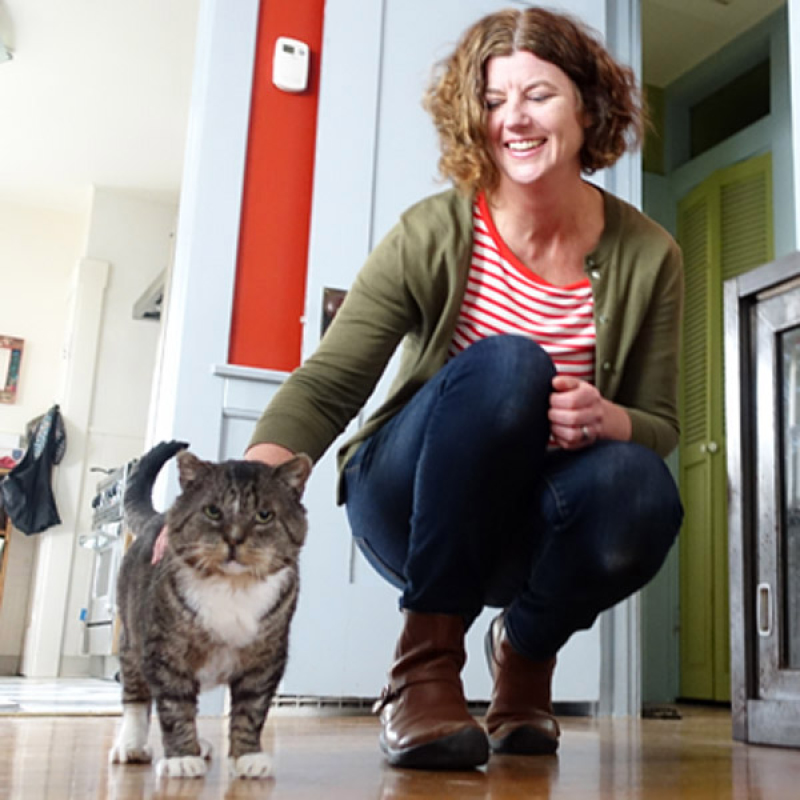
Favorite Kitty Lover Resources
January 22, 2018
Interview! Ann Dunn, Founder of Cat Town, Oakland, CA
February 3, 2018
Building a sustainable fostering program can be one of the most powerful ways for organizations to be able to help more cats. I interviewed Bryn Rogers, Assistant Director of Adoption Center Programs and Katie Armour, Project Coordinator, of the Massachusetts Society for the Prevention of Cruelty to Animals (MSPCA). We discussed their Top Tips for Building Your Foster Network to make sure they have enough “soft landings” for their many animals in need of care.
Top Tip #1: Never stop recruiting and cast a broad net.
Not every individual who applies to foster is going to be a good fit. You’re always going to lose fosters for any number of reasons. Things like change in life circumstances, a move, loss of interest for example. MSPCA is constantly promoting their need for fosters. They also hold monthly orientations for their applicants and constantly looking to replenish their supply.
While the “ideal” foster may be a single person with no other animals, Katie notes not to make assumptions about peoples’ ability. Despite their age or where they live, they may be very effective fosters. It’s important to judge each candidate on their own merits. MSPCA likes individuals with a combination of “independence and willingness to learn.”
Top Tip #2: Train them consistently, but make sure they have a lifeline if they need help.
MSPCA has developed a handbook they provide to every foster. It describes and urges them to reach out if they have a question or issue. And they review the specific needs of each cat or kitten with the foster prior to releasing those animals. That said, every foster is bound to forget a detail…or two or three. For example, your protocol calls for fosters to weigh their kittens daily, but that schedule might slip. Be sure to check in frequently and ask your fosters to “over-communicate” with you. Make sure your guidelines are being followed to the best of the foster’s ability.

Top Tip #3: Be realistic with your fosters about what type of skills and homes are needed.
Lots of individuals join the foster program because they’re hoping for lots of moms and adorable kittens. However, today MSPCA has different types of cats in need of “soft landings,” especially cats with medical needs, shy cats, and feral kittens in need of socialization. Try to develop expertise among your fosters for these more challenging animals. Have them learn how to give meds or administer insulin, which can make a foster even more valuable.
Top Tip #4: Be honest about potential outcomes.
Not all situations end happily despite the love and care given by a foster. Kittens can fail to thrive or a cat’s medical condition can deteriorate. Katie and Bryn suggest that you have a “brutally” honest discussion about the emotional situations fosters may face. Importantly, the foster contract used by MSPCA makes sure that all decisions relating to medical care remain under the adoption center’s control. They also make sure that foster homes understand that in the most dire situations euthanasia may be an option that the adoption center feels is necessary for a particular animal. Open and honest discourse with foster homes about euthanasia decisions validates the bonds that they’ve made with their foster animals. This hopefully will help them understand that the decision to euthanize an animal who is suffering beyond help can be the most loving and humane one.
Top Tip #5: Ask your fosters to be advocates for their animals.
Pictures, videos and descriptions can be a powerful tool for marketing a cat once they’re ready to leave their foster home for adoption. Be sure to ask your foster families to observe their kitties’ traits and habits in order to bring them to life for potential adopters.
Top Tip #6: Organize, organize, organize!
Maintain detailed spreadsheets about your foster families and their abilities, and of course, a separate spreadsheet tracking each of the cats you send out to foster. Learn from your experiences with your fosters and note them on your spreadsheet.
Photo Credits: Petfinder.com, Readers Digest




